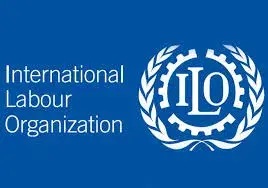
Source:www.ilo.org
Introduction –
Safety management has long been a crucial issue in the corporate world, giving invaluable benefits in terms of its input towards the wellbeing and interest of the people working in such organizations. The welfare of the workers should always be the primary concern of the employers. Many workplaces nowadays have opted to keep in place effective safety management system or plan. Safety management plan differs from workplace to workplace as well as sector to sector.
Through the years, there has been a number of safety management plans and systems which can be adopted by organizations as per their requirements. In this article, we shall briefly look into the guidelines on occupational safety and health management systems as provided by the International Labour Organization (herein after referred to as “ILO”). According to this system, there are five essential elements for effectively rendering safety and welfare measures to the workers , which are as follows –
- Policy
- Organizing
- Planning and implementation
- Evaluation v Action for improvement.
Policy –
The Occupational Safety and Health (herein after referred to as (OSH) policy regarding safety management of an organization should be set out in consultation with the workers and their representatives. Such a policy should be void of any uncertainty. It should be concise, clear and be specific to the organization, size and nature of its activity. The policy should also ensure the participation of its workers towards framing an effective policy, organizing, planning and implementation and action for improvement. This is to ensure that the best policies regarding the safety and health of workers can be undertaken by the organizations.
Organizing –
When it comes to organizing the welfare, safety and health of the workers of an organization, the employers are the ones to step up and take all reasonable measures to the fullest extent and responsibilities towards their workers. The employer and senior management should allocate responsibility, accountability and authority for the development, implementation and performance of the OSH management system and the achievement of the relevant OSH objectives, while establishing a sound structure and process that all workers should abide by regarding safety and health.
Along with the above mentioned, the employer should provide the necessary means to the workers and provide training, which covers each and every member of the organization, to ensure that they are competent to handle the safety and health aspects of their duties and responsibilities. According to the size and nature of activity of the organization, OSH management system documentation should be established and maintained, which does not fail to outline the policy and objectives of the organization, while effectively communicating such policies among all levels within the organization.
Planning and implementation –
It is imperative that every organization with an OSH management system adheres to proper planning and evaluation of such systems through an initial review. The main purpose of planning the OSH management is to see that compliance to national laws are ascertained and to make sure that national laws, guidelines and regulations are identified and followed. Apart from this, it is upon the employer to build a system which minimizes hazard and risk, a system which controls and eliminates it. Every possible step should be taken to strive towards providing a safe workplace to the workers.
Evaluation –
It goes without saying that every safety management system or plan within an organization should stand the test of evaluation, in order to provide efficient and effective measures to the workers and everyone within the organization. With that being said, the evaluation process should be carefully implemented which includes procedures to monitor, measure and record the performance of the OSH within the organization. It doesn’t end there, investigations regarding injuries from work related issues, ill health, diseases should be carried out in an organized and planned manner, along with their impact on the safety and health performance within the organization. Such evaluations cannot be successful without periodic audits of the OSH policy and management review.
Action for Improvement –
Lastly, to maintain an effective safety management system/plan, there are certain preventive and corrective actions that an employer must take resulting from the actions taken through the safety management system by identifying and the root cause of non-conformities and initiate and implement preventive actions to correct such areas where there are shortcomings, while striving for continual improvement by analyzing results and outcomes of certain actions taken through the system.
Conclusion –
One can never stress enough the importance and value of a well-planned and organized safety management system/plan when running an organization. The safety and welfare of the workers should be among the top priorities of the employers in any organization. Safe working environment and conditions to the best possible extent should be provided at all times by an employer. Hence, as much as it is the duty of an employer to provide safety to the welfare of workers, it is also the duty of workers to be aware and confirm if the organization is rendering concrete safety management system/plan to its workers as well.
[1] http://www.ilo.org/wcmsp5/groups/public/—ed_protect/—protrav/—
safework/documents/publication/wcms_153930.pdf

